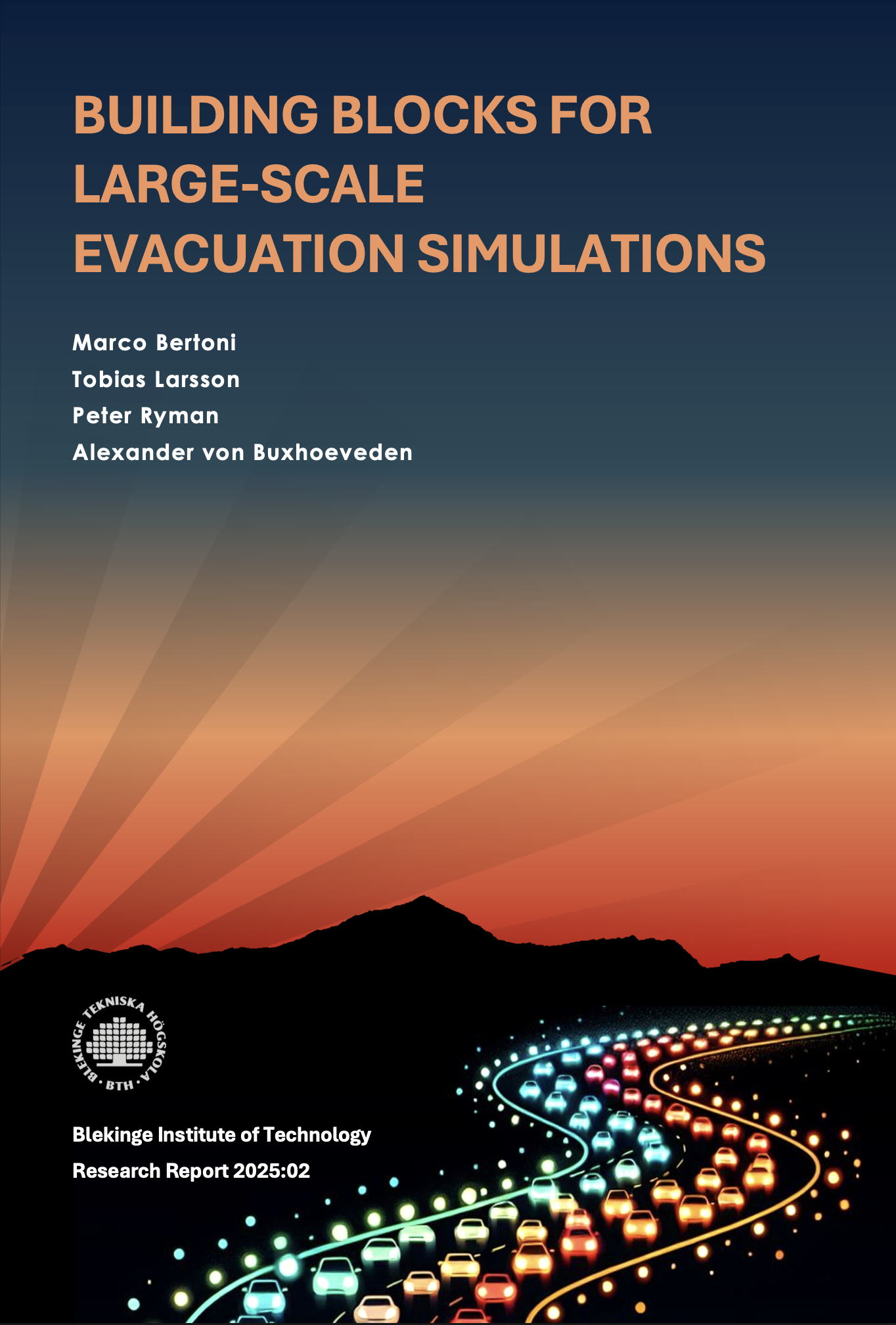
Building blocks for large-scale evacuation simulations
- Post by: Tobias Larsson
- 19th May 2025
- No Comment
Abstract
Effective evacuation planning is a complex challenge that aims to save lives, reduce travel time, and ensure the provision of essential care to vulnerable individuals. Evacuation simulation models are vital tools for evaluating different scenarios, identifying potential bottlenecks, and optimising strategies for large-scale evacuations. This report contains original and unpublished work that examines how these tools and their components can strengthen disaster preparedness and support decision-makers in managing the complexities of emergency response. It kicks off by outlining the key performance indicators (KPIs) relevant to large-scale evacuation, to then review current simulation approaches and their foundational building blocks. These include functions, algorithms, and models used to simulate and analyse various stages of evacuation: from pre-evacuation processes and individual decision making after a warning is issued, to traffic assignment, road network dynamics, vehicle behaviours,and shelter capacity management.The research work primarily focuses on macroscopic and mesoscopic simulation models, highlighting the strengths and limitations of the different paradigms and frameworks discussed in the literature. The report also features a curated selection of commercially available software, providing a timeline of their development, a comparison of key features, and insights into their real-world application in evacuation planning. This overview is further enriched with a series of case studies illustrating how these tools have been employed in disaster and crisis scenarios around the world.This report is published by Blekinge Institute of Technology (BTH) and is funded by the Swedish Civil Contingencies Agency (Myndigheten för samhällsskydd och beredskap, MSB) as part of the project Digital Decision Support for Large-Scale Evacuation (DISTURB). The DISTURB project is financed through the 2:4 Crisis Preparedness Fund (Anslag 2:4 Krisberedskap), which aims tosupport initiatives that strengthen society’s ability to manage crises and their consequences, and to develop and maintain the capacity for heightened civil defence preparedness.
Keywords
Evacuation Simulation, Large-Scale Evacuation, Crisis Preparedness, Emergency Planning, Agent-Based Modelling, Discrete-Event Simulation, Population Distribution Modelling, Traffic Flow Modelling, Shelter modelling, Decision Support Systems
Reference
Bertoni, M., Larsson, T., Ryman, P., & von Buxhoeveden, A. (2025). Building blocks for large-scale evacuation simulations. Retrieved from Blekinge Tekniska Högskola website: https://urn.kb.se/resolve?urn=urn:nbn:se:bth-27847
